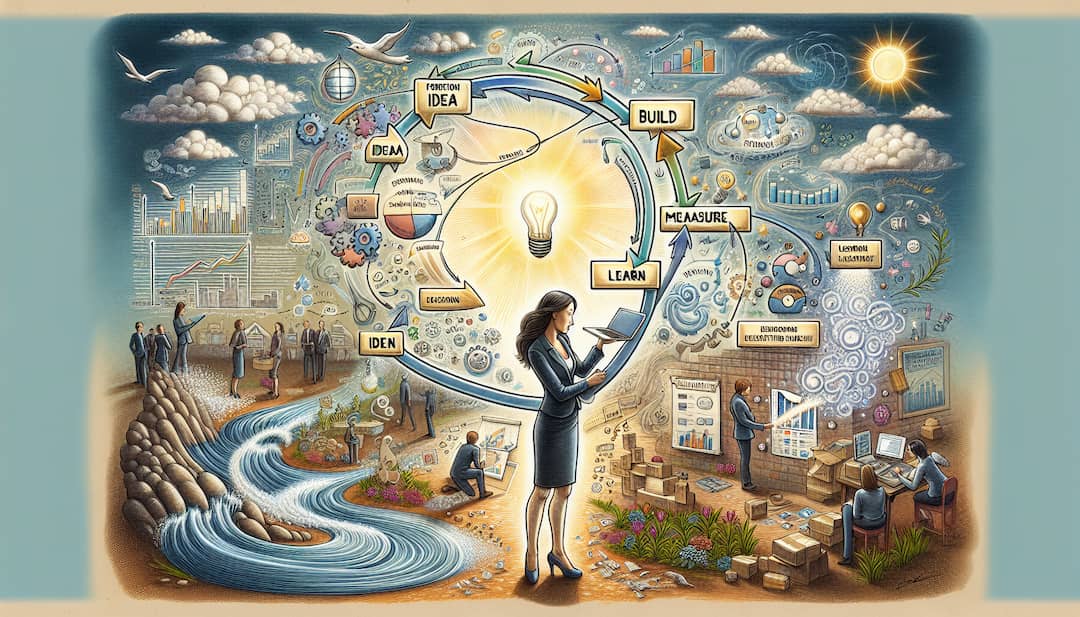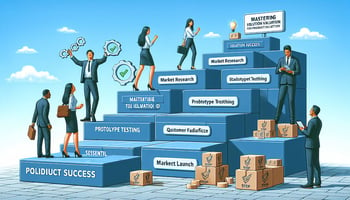Embracing Efficiency: The Lean Startup Approach
Understanding the Lean Startup Methodology
The Lean Startup approach, created by entrepreneur Eric Ries, revolutionized how new businesses are launched and existing products are managed. It advocates for an iterative product development cycle that prioritizes customer feedback, agile development, and innovative accounting. This strategy aims to shorten product development cycles and reduce waste while efficiently discovering what customers want. This process involves building a minimal viable product (MVP), measuring its performance in the market, and learning from the experience. The knowledge gained is then used to decide on the next step, whether to pivot or persevere in the current direction.
The Build-Measure-Learn Feedback Loop
The Build-Measure-Learn feedback loop anchors the Lean Startup methodology. The goal is to transform ideas into products as quickly as possible to initiate the learning process sooner. In the 'Build' phase, startups develop an MVP – the simplest version of the product that allows the team to start the learning process. Following the release, in the 'Measure' phase, companies use quantitative measures to gain insights into how customers use the product. Finally, in the 'Learn' phase, based on the data collected, startups decide whether to pivot, make a fundamental change to the product, or persevere with the existing strategy.
The Importance of Validated Learning
One of the critical elements of the Lean Startup methodology is validated learning — a rigorous method for demonstrating progress when one is embedded in the soil of extreme uncertainty where startups thrive. Rather than using vanity metrics that can give the illusion of success, startups focus on actionable metrics that show cause and effect. This approach rejects the traditional methods where product development is done in isolation from the customers' needs and instead embraces a customer-developer partnership that stresses learning about what the customer wants and is willing to pay for.
Lean Thinking: Eliminating Waste
Incorporating lean thinking means identifying and doing away with waste within the product development phase. Any effort not contributing to learning about the customer's wants is eliminated. This focuses on avoiding developing features or services that do not serve the product's core value proposition. By streamlining processes, lean businesses can reduce costs and increase the value of their offering for the customer.
Benefits of the Lean Startup Approach
Startups employing the Lean methodology can benefit from reduced time to market and increased cost-efficiency. They are also better equipped to adapt to changes, given their emphasis on flexibility and responsiveness to customer feedback. Moreover, by stressing the importance of actionable metrics, Lean Startups can more effectively track their progress and pivot when necessary, thus reducing the risk of sticking with ineffective strategies or product features.
Challenges and Critiques
Despite its popularity, the Lean Startup method is not without criticism. Some argue that focusing on efficiency and speed can lead to a narrow vision that overlooks the broader potential of the products or market opportunities. Others caution that too much reliance on pivoting can lead to a lack of direction. Balancing the lean approach with long-term planning and strategic thinking is critical.
Conclusion: A Paradigm for Modern Businesses
As a business owner, I've found the Lean Startup methodology incredibly helpful in navigating the ever-changing landscape of the modern business world. By putting the needs of our customers first, we've been able to innovate quickly and sustainably. Plus, the focus on eliminating inefficiencies has helped us streamline our operations and boost productivity. However, it's important to remember that while efficiency is crucial, we must keep the bigger picture in mind and ensure we stay true to our overall goals and values.





